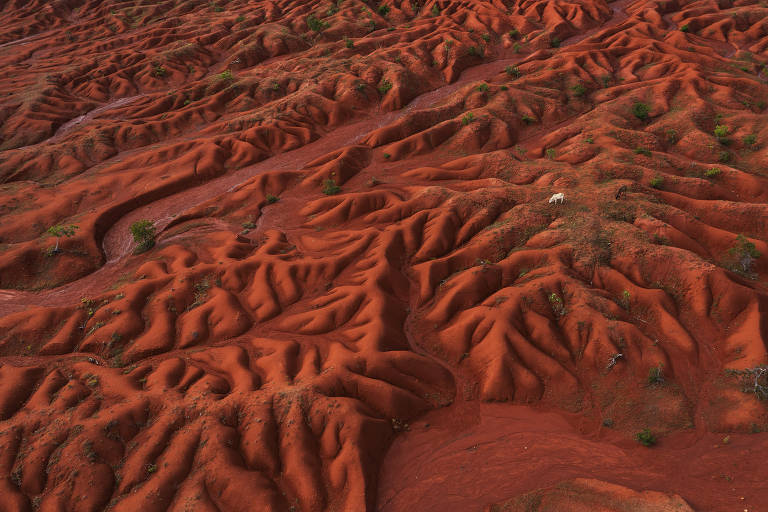Even during the rainy season in the cerrado, the vegetation is sparse in the largest desertification nucleus in the country, in Gilbués, southern Piauí. Silence reigns. The song of a few birds taking shelter in the few trees is almost drowned out by the whistling wind.
"Here in the dry season, everything turns red. The leaves fall from the trees, and everything becomes very dry," says Celi Aguiar, 63, a municipal school teacher in the city.
The rainy months, from October to March, are considered the "winter" of the biome and help to mitigate the high temperatures. "The heat has increased a lot. Especially from last year to now," says Celi, who has lived in Gilbués since childhood.
The report visited the region at the end of March, under rain, which turns the red earth into mud that sticks to the soles of shoes and makes even tractioned cars slip.
The rain can be deceptive, disguising the advance of the arid climate, characterized by increased heat and dryness.
According to data from the National Center for Monitoring and Alerts of Natural Disasters, from 1960 to 1990, the aridity index in the municipality was 0.66, equivalent to a dry sub-humid climate. From 2010 to 2020, it dropped to 0.52, closer to the semi-arid climate.
The decrease in rainfall there goes hand in hand with deforestation. The removal of native vegetation reduces the amount of moisture that plants release into the atmosphere. And the cerrado has already lost 46% of its original coverage.
